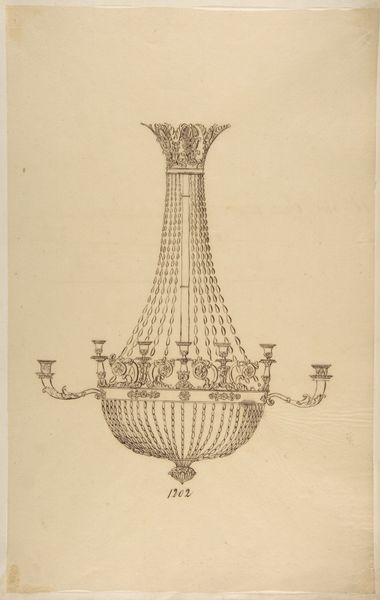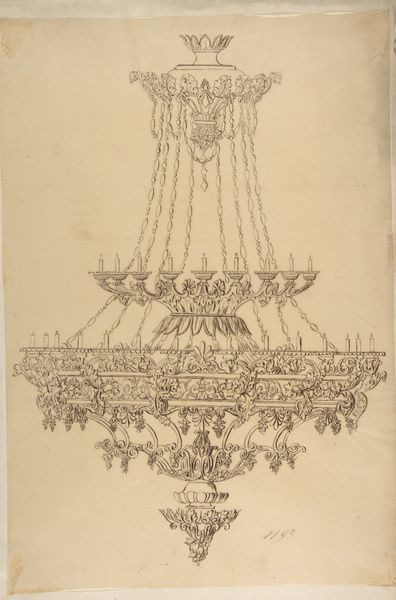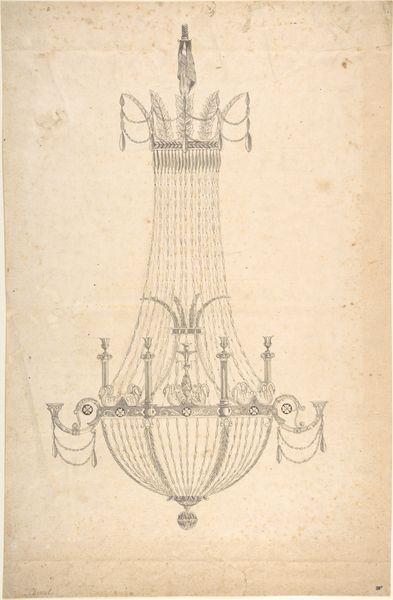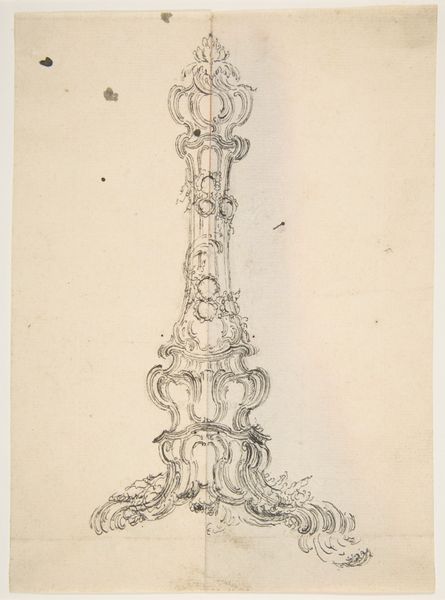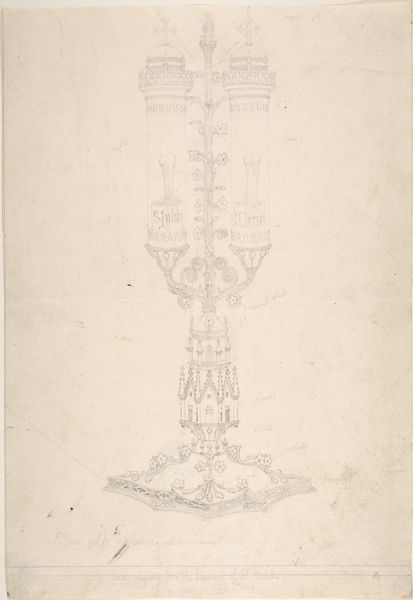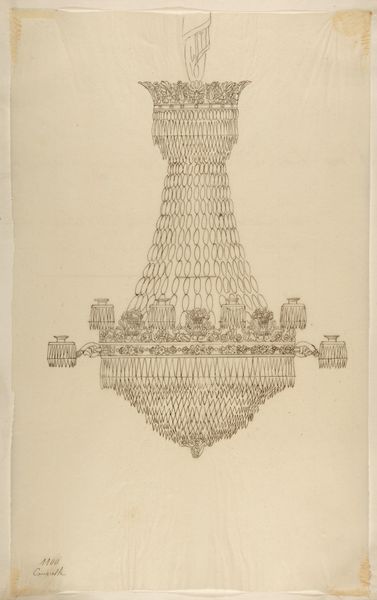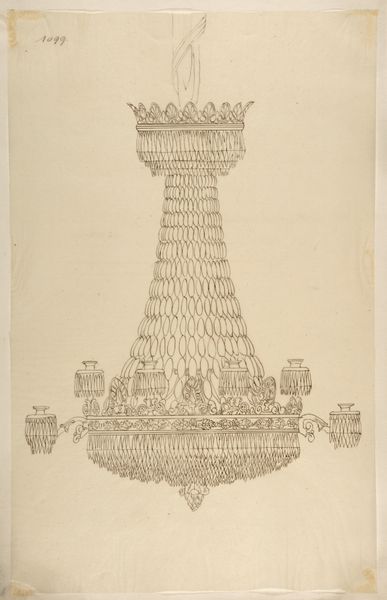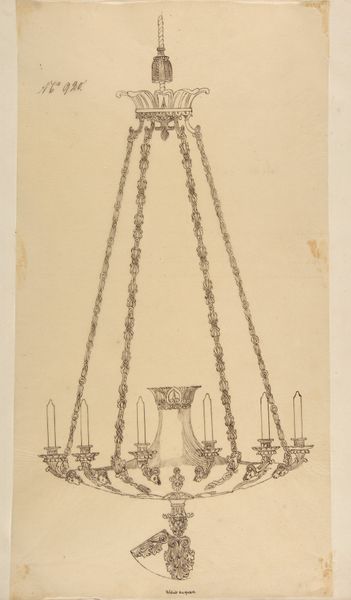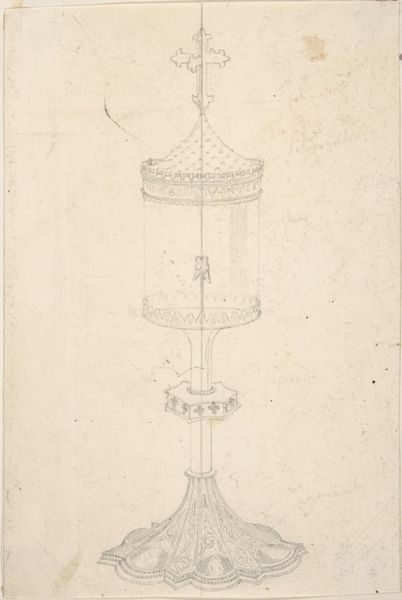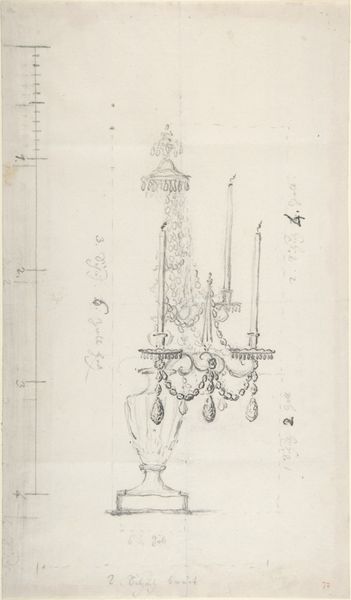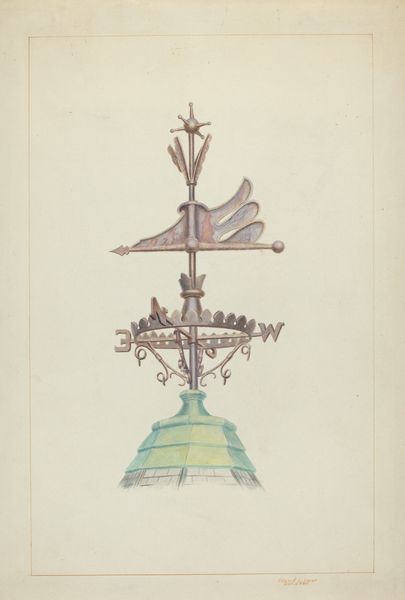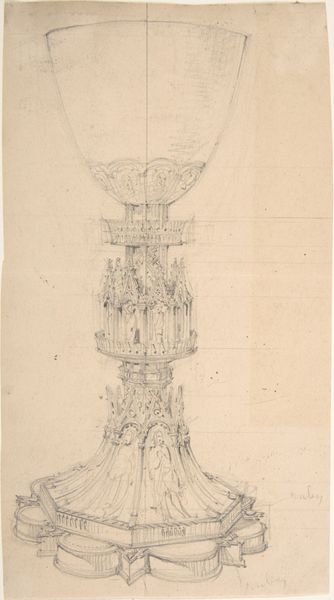
Dimensions: sheet: 15 5/8 x 10 5/16 in. (39.7 x 26.2 cm)
Copyright: Public Domain
Curator: Here we have "Design for a Chandelier," a 19th-century print using etching. Editor: At first glance, the chandelier appears skeletal, almost fragile. The fine lines of the etching barely contain its elaborate form, making it seem more like an idea of grandeur than something materially solid. Curator: Right. As a cultural symbol, chandeliers often represented wealth, status, and the celebration of light and enlightenment. What do you make of that now, viewed through the lens of mass production? Editor: It becomes complicated. Chandeliers of this size and style, in their heyday, meant skilled labor and specialized materials accessible only to a very few. Today, knock-offs fill retail spaces, blurring that association of class. One wonders what the working conditions were to produce such pieces...Were they equally opulent as what hung over dinner tables? Curator: Good question. Etchings allowed for reproduction, democratizing the design even if the actual object remained exclusive. It gave artisans access to trending styles. One sees a strong relationship to earlier Baroque forms here... perhaps designers consulting historical visual sources. Editor: Exactly! But I'm curious about the original materials. Was it meant for crystal, glass, or something less precious? The etching itself seems almost deceptive—suggesting luminosity with nothing but ink. Curator: Yes, and the choice of forms—garlands, geometric shapes, flame-like flourishes. It speaks to a visual language tied to notions of beauty, aspiration, but also ephemeral things such as light. It makes me think about memory, and how our brains tend to reduce everything to symbols, not facts. Editor: Ultimately, this etching reminds us how the meanings of objects transform when removed from their making. Curator: Indeed, it invites us to reconsider not just the object itself, but the complex web of desires and social conditions surrounding it. Editor: I can’t unsee the layers of labor and global commerce hidden in plain sight by those ornate lines.
Comments
No comments
Be the first to comment and join the conversation on the ultimate creative platform.
